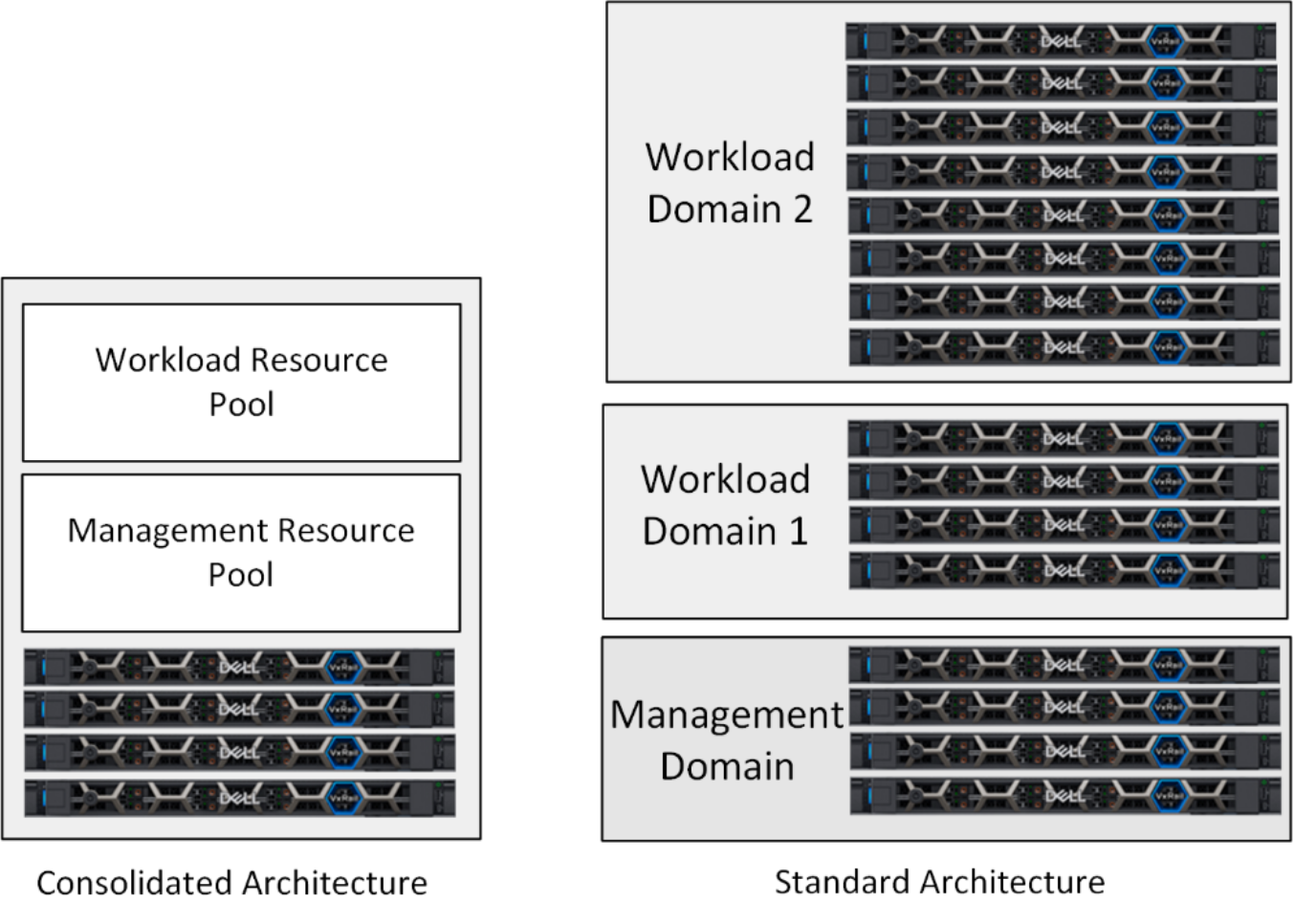Home > Integrated Products > VxRail > Guides > Planning Guide—VMware Cloud Foundation 5.x on VxRail > Consolidated vs. standard architecture
Consolidated vs. standard architecture
-
In a standard deployment, the Cloud Foundation management workload domain consists of workloads supporting the virtual infrastructure, cloud operations, cloud automation, business continuity, and security and compliance components for the SDDC. Using SDDC Manager, separate workload domains are allocated to tenant or containerized workloads. In a consolidated architecture, the Cloud Foundation management workload domain runs both the management workloads and tenant workloads.

Figure 20. Consolidated architectures and standard architectures
There are limitations to the consolidated architecture model that must be considered that will impact this decision-making process.
- Because a consolidated architecture cannot be easily converted to a standard architecture, you must decide whether to deploy a consolidated architecture at deployment time. The conversion process requires deploying a new VI workload domain and migrating the workload running in the workload resource pool.
- You cannot run use cases that require a VI workload domain to be configured to meet specific application requirements on a consolidated architecture. (The single management workload domain cannot be tailored to support management functionality and these use cases.) If your plans include applications that require a specialized VI workload domain, such as Horizon for virtual desktops or Kubernetes as a service, you must use a standard architecture.
- Life-cycle management can be applied to individual VI workload domains in a standard architecture. If the applications targeted for Cloud Foundation on VxRail have strict dependencies on the underlying platform, consolidated architecture is not an option.
- Licensing in a standard architecture offers more flexibility, where licensing assets can be applied to individual VI workload domains. In a consolidated architecture, this flexibility is not an option.
- Scalability in a consolidated architecture has less flexibility than a standard architecture. Expansion is limited to the underlying VxRail cluster or clusters supporting the single management workload domain in a consolidated architecture, as all resources are shared. The minimum node count is eight for a standard architecture. Dell-Technologies recommends that any workload requirements that will require eight or more nodes should plan for a deployment using a standard architecture.
- If a VxRail cluster was built using two Ethernet ports, consolidating VxRail traffic and NSX traffic, additional nodes added to a cluster are limited to two Ethernet ports being used for Cloud Foundation for VxRail. With a standard architecture, a new VI workload domain can be deployed with a network architecture that differs from the management domain. This is not an option with a consolidated architecture.
